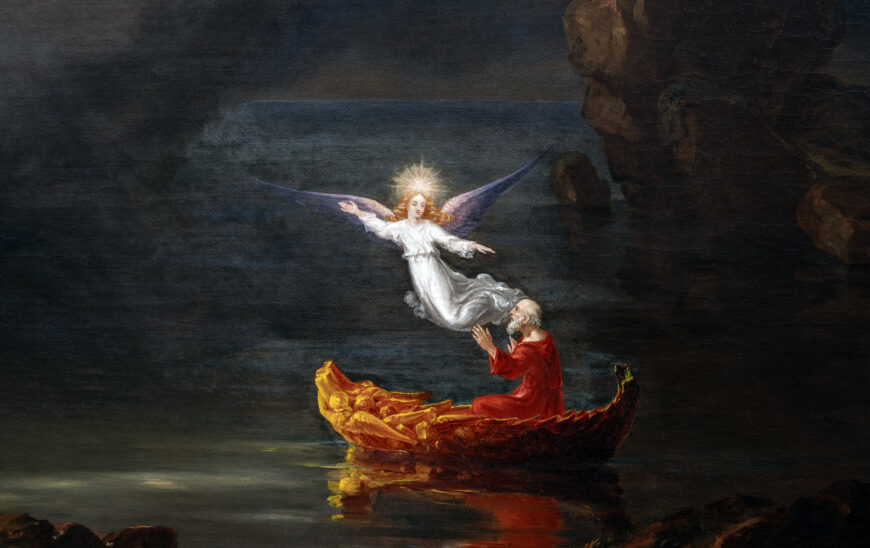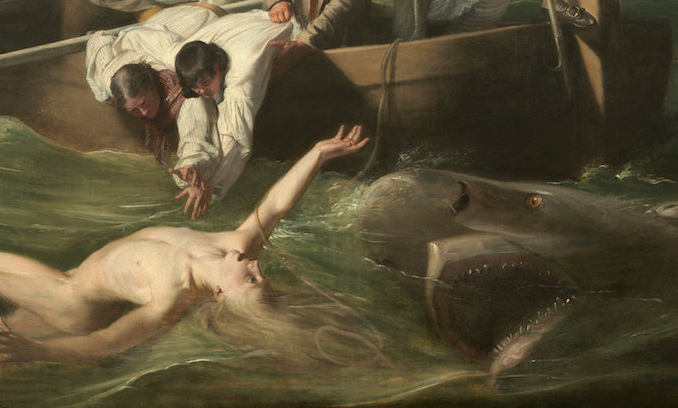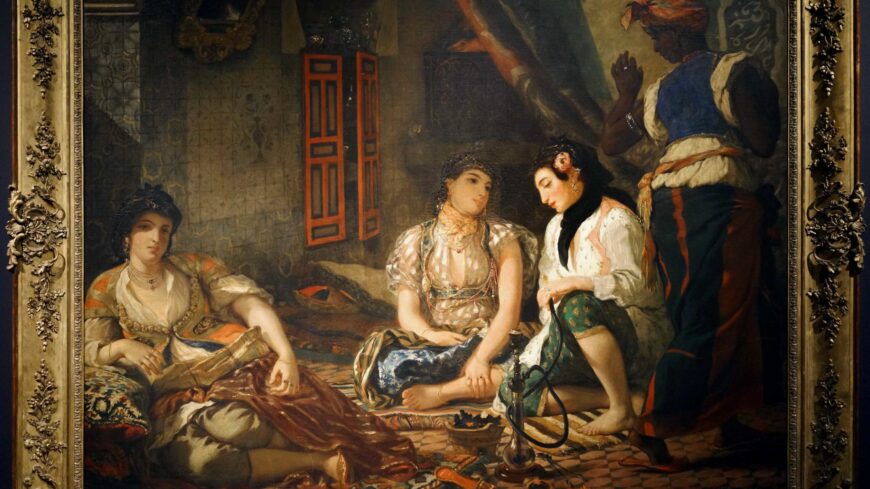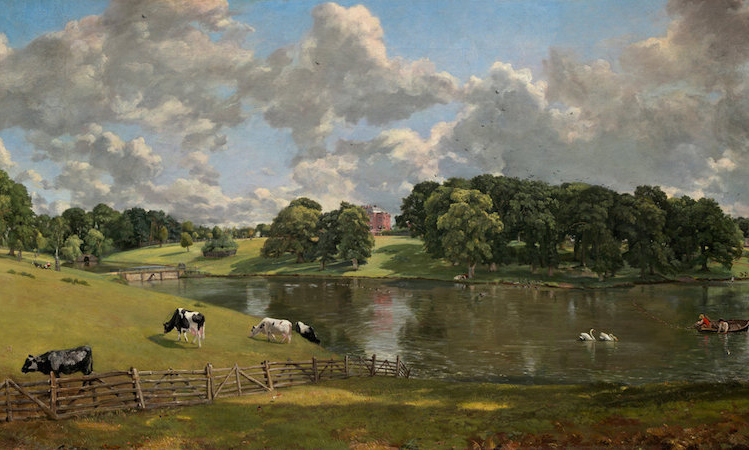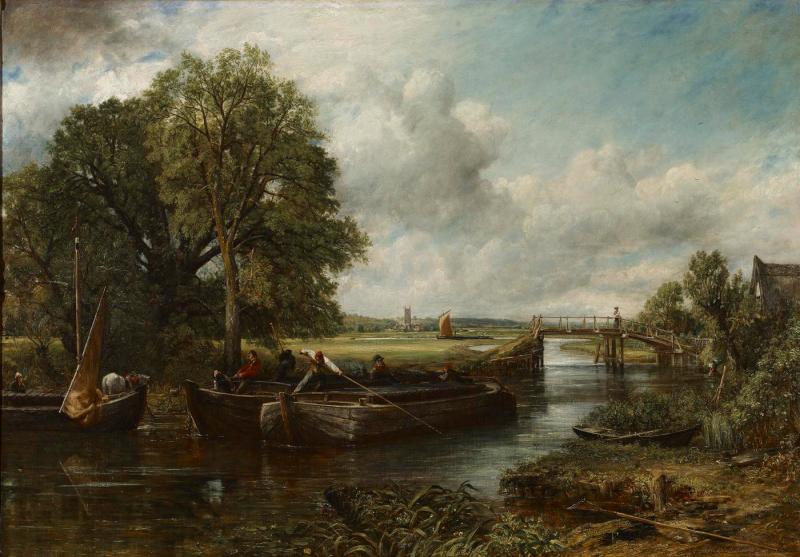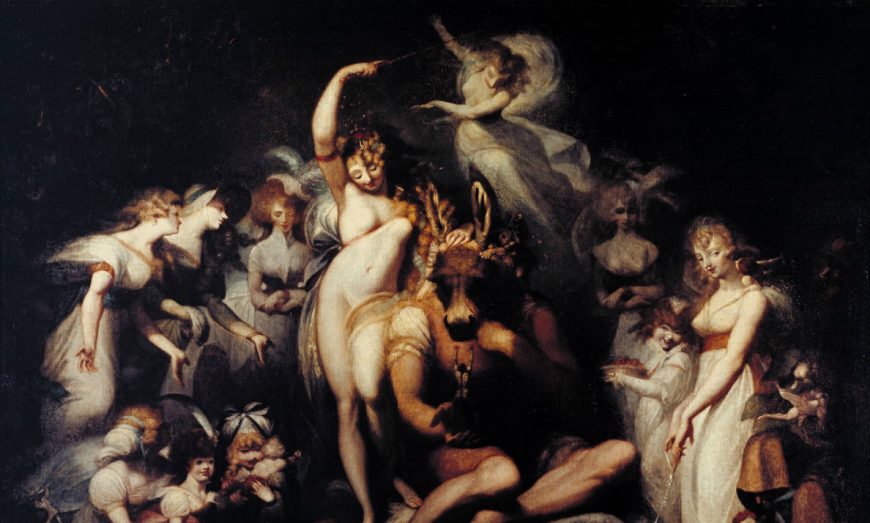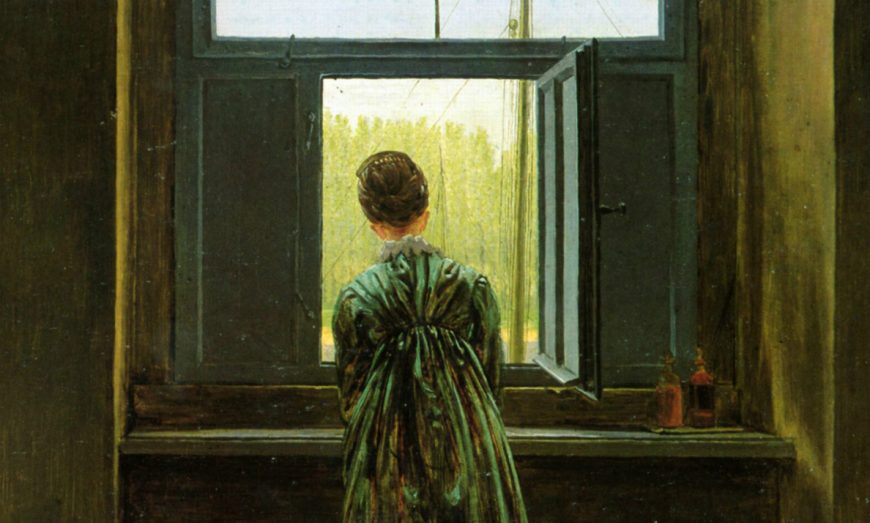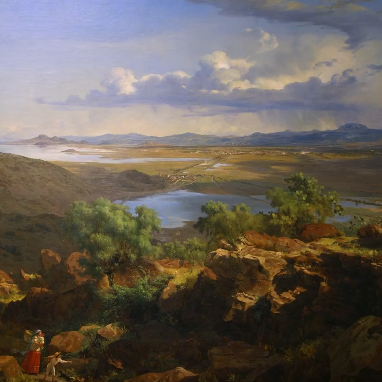Eugène Delacroix, Greece on the Ruins of Missolonghi, 1826, oil on canvas, 208 cm × 147 cm (Musée des Beaux-Arts de Bordeaux). Speakers: Dr. Steven Zucker and Dr. Beth Harris
[0:00] [music]
Dr. Beth Harris: [0:04] We’re at the Metropolitan Museum of Art, at a special exhibition on the works of the great French painter Eugène Delacroix. We’re looking at a large painting, one of his great masterpieces. This is “Greece on the Ruins of Missolonghi.”
Dr. Steven Zucker: [0:18] But it’s not literally Greece. It’s a representation of a woman who personifies Greece, and personifies especially what Greece represented to France, to England, to western Europe.
Dr. Harris: [0:28] Ancient Greece was understood as the very bedrock of the greatness of Western civilization.
Dr. Zucker: [0:34] When this painting was exhibited in 1827, this woman represented 2,000 years of Western culture, but a culture that was under attack. And so this painting speaks to a specific historical event. Before we get there, let’s just look at the painting itself.
Dr. Harris: [0:49] We’re looking at a female figure in this ruinous battlefield, pointing down to these ruins. Clearly, we’re looking at a scene of death and destruction, and Greece in despair.
Dr. Zucker: [1:02] If you look closely on the left side, you can see a row of severed heads.
Dr. Harris: [1:07] She seems to look out of the canvas as though she were surveying a horizon of ruins, just like the ones that we see behind her. Delacroix is painting a specific contemporary event, the Greek war for independence from the Ottoman empire, and a specific siege that occurred in the Greek city of Missolonghi.
Dr. Zucker: [1:27] It’s estimated that 30,000 Greeks lost their lives during this combat, and many more were placed into bondage.
Dr. Harris: [1:34] There was starvation, there was disease. And this figure expresses that tragedy.
Dr. Zucker: [1:39] And elicits our sympathy.
Dr. Harris: [1:41] Greece had been part of the Ottoman Empire for centuries, and declared its independence in the early 19th century. The liberals of Europe were very sympathetic to the Greek cause.
Dr. Zucker: [1:53] For me, it seems as if she’s asking a question, and it’s one that I think Delacroix was asking. It’s about the ruins of civilization.
Dr. Harris: [2:01] She does seem to be asking a question, “Why did we allow this to happen?” and also a statement, “Look at what we’ve allowed to take place. How easily and quickly cultures can be destroyed by war.”
Dr. Zucker: [2:13] The woman seems to be asking, “Where is Europe? Where are our allies? Who is coming to our aid?”
Dr. Harris: [2:21] One knee is propped up by those rocks. Under those rocks we see a body, and we see an arm of a dead figure on the battlefield. She can’t quite stand. She opens her arms. She feels almost windswept, and her body is unstable because of the tragedy of what she sees around her.
Dr. Zucker: [2:41] It’s as if she’s collapsing, and yet at the same moment, she holds herself erect, this noble figure.
Dr. Harris: [2:47] The way the drapery clings to her body reminds us of ancient Greek and Roman art, and it also reminds us of the revival of ancient Greek and Roman art that happened under the artist Jacques-Louis David.
[2:58] In fact, this figure with her arms open on a battlefield recalls David’s painting of “The Intervention of the Sabine Women,” where women plead for their male relations to stop the war, to stop the violence.
Dr. Zucker: [3:12] The woman also recalls the Virgin Mary in the Pietà, but here, the body of Christ has been removed, and so we only have the grieving figure. But Delacroix is clearly representing here a contrast between the innocence, the purity, the white skin of the European woman with the darker-skinned figure in the background.
[3:32] That figure is representing an Egyptian, somebody who is aligned with the Ottomans.
Dr. Harris: [3:37] The Ottomans in Europe at this time are understood as threatening the great civilization of Europe built on the foundations of classical antiquity. This is not an objective view of history.
Dr. Zucker: [3:51] What it is is a document that helps us understand the French perspective in the early 19th century, with its racism and with its sense of superiority.
[4:00] Delacroix is often referred to as a painter in a style that we call Romanticism. So what does that mean here?
Dr. Harris: [4:06] We don’t see very precise contours. There’s an openness and fluidness to the brushwork. There’s an interest in color, emotion. All of these are typical of Romanticism.
Dr. Zucker: [4:18] Let’s spend a moment looking at Delacroix’s color. There are these vivid reds in the Egyptian figure at the upper right, that brilliant shimmering white of the cloth that she wears.
[4:28] But look at the blues of her jacket, and especially at the lower edge, where you can see the blue seems to shimmer, and as it loses the light, it seems to turn almost red. In the Romanticism of Delacroix, death is not heroic. Death seems pointless.
Dr. Harris: [4:44] And is foregrounded. We do have only an arm, with a limp hand that pushes out into our space. There’s a splash of blood on the rock that’s closest to us. Delacroix is not hiding the gruesome violence here. You’re right, it’s not heroic. It is completely tragic, and it feels as though she’s saying to us, “This is in our power to stop.”
[5:08] [music]


